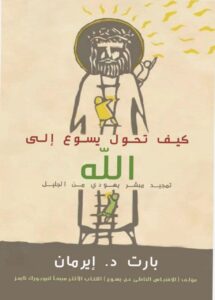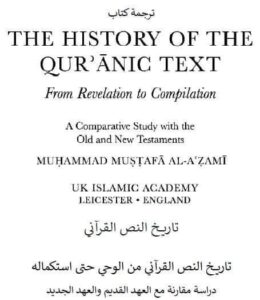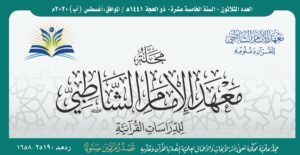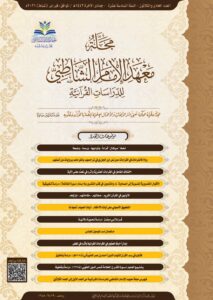THE NABATAEAN SCRIPT: A BRIDGE BETWEEN THE ARAMAIC AND THE ARABIC ALPHABETS

We generally admire the Nabataeans for their abilities in architecture and hydraulics, and their outstanding capacity to smartly assimilate divers aspects from the surrounding cultures. The Nabataean kingdom emerged between the 3rd and the 1st century BC and melted in the Roman province of Arabia after 106 AD. However, their influence persisted far beyond this date. It is especially the case for an aspect of their culture that generally remains ignored by the public: their script, which is the direct ancestor of the modern Arabic alphabet. What is the origin of the Nabataean writing system and how it evolved to the cursive Arabic… here are some key highlights, as a complement to the page about the pre-Islamic graffiti of the desert:

Following the epigraphic and papyrological documentation, the Nabataeans used a variant of Aramaic script.
The Aramaic script derived from the Phoenician alphabet (opposite table) itself coming from the Proto-Canaanite script system that was in use in the Late Bronze Age for noting down the Canaanite languages, among them the Ammonite, the Moabite and the Edomite dialects.
The Phoenician script extended during the Iron Age for transcribing all the Northwest Semitic dialects including the Paleo-Hebrew and Old-Aramaic. Due to the trade activities, the Phoenician script disseminated far beyond the Canaanite cultures, and notably through Mediterranean. It became the most widely used alphabet at that time and derived in the western alphabet systems.

Originally, Aramaic is the language of the Aramean people, who was settled around 1000 BC in the North Fertile Crescent, between Syria and Mesopotamia.
During the Neo-Assyrian period (911-605 BC) and under the political influence, Aramaic became the language of the leading classes and spread through the whole Levant, with local variants.
Under the successive realms (Neo-Babylonian 636-539 BC, Achaemenid (539-330 BC) the Aramaic script, transmitted through generations of scribes, diffused in all the regions under a standardized form, named by the scholar the Imperial Aramaic (opposite table). The Achaemenid king Darius I ( 550–486 BC) officially established the Imperial Aramaic language and alphabet as a lingua franca, a kind of international communication language used for administration, trade, legality and religion. At its heights, Aramaic was in use in the whole Near and Middle-East, the today Jordan and Northern, Western and Eastern Arabia along with local dialects. Its use and influence persisted much beyond the Achaemenid realm.
Despite that Greek overtook as an administrative language imposed by the Seleucids dynasty, diverse local forms of Aramaic maintained in the population through the whole Levant with increasing regional and distinctive features and ramifications, along with Old-Arabic dialects in certain areas. The languages map around the last centuries BC and the first centuries AD becomes extremely complex and unclear. The Nabataean Aramaic script is one of those Aramaic local variants. Aramaic script is abjad (consonantic), like all the Semitic alphabets, and consists in 22 glyphs. However, the system developed over time a series of suprasegmental diacritics, aimed at better describing the phonetic structure of the words. These diacritics include marks for vowels.
For a Aramaic chronological script table, click here.
For the 3 main types of Aramaic script (early, imperial and square), click aramaic.pdf.
examples of Aramaic scripts
| From Hatra, Iraq, 1st – 3rd century AD | From Tayma, North Arabia, 5th century BC | From Palmyra |
 |  |  |
| From Palmyra, 3rd century BC | From Iran, 1st century AD | From Egypt, 5th century BC |
 |  |
Unfortunately, almost all the Nabataean documentation on perishable supports has disappeared, except few papyri. 90% of the survival Nabataean texts are signatures, far to be enough for establishing an accurate picture of the language spoken by the Nabataeans. The few papyri documentation consists in administrative or legal texts written in Aramaic, with sometimes technical words given with their Arabic correspondent. This feature makes some scholars suggest that the Nabataeans spoke an Old-Arabic dialect while using Aramaic for writing official, administrative and legal documents… the question is especially complex since the Nabataean kingdom extended between the western Aramaic speaking regions till the eastern and southern areas where the Old-Arabic dialects are well attested. What we call today “the Nabataeans” is not an homogeneous people. The population living under the Nabataean rule belongs to diversified social strata, geographic zones and origins, moreover if this population is partly sedentary, partly nomad. Indeed, we must probably imagine the “Nabataean” society as multilingual. Thus, most of scholars assume that, while the Nabataeans use the Imperial Aramaic for a literary language, there are enough hints in the syntax and onomastics attesting that they were in fact Old-Arabic dialect speakers. But for some others, those features must be understood as the influence of an Arabic substratum exercised on the Nabataean Aramaic language.
The question of the language spoken by the Nabataean elite interlinks with the vagueness surrounding their origin. If we suppose a South or East Arabian or even a Sinaitic origin we would rather expect that they spoke an Old-Arabic dialect and used the Aramaic script and language for writing. Nevertheless, such origins are far from being ascertained and are even nowadays brought into doubt. We can also assume that they originated from the region of Petra itself, or at least the mountain of South Jordan, from where they radiated all around through their trade activities. Several hints go in this direction. Therefore, it would be plausible that the native language of at least of part of the Nabataeans was a local Aramaic dialect. Aramaic inscriptions exist from the early days of the kingdom. Despite of some loanwords and personal Arabic names found in the North Arabian area – where they are effectively expected- the inscriptions attest of a constant Aramaic character through the time, especially in Petra area. Only two inscriptions fully composed in Arabic language but written in Nabataean script have been discovered so far, one in the Sinai (a 2 lines prayer enclosed in a votive Aramaic inscription, about 150 AD) and the Namarah inscription found near Damascus (see below, 328 AC). However, diachrony must also be taken into consideration: the use of Aramaic progressively weakened over time for the gain of the Arabic, so that around of the 4th century BC, the influence of Arabic and inclusion of Arabic features in the texts become evident and regular.

https://www.omniglot.com/writing/nabataean.htm
Examples of Nabataean inscriptions from Petra
We find the Nabataean script in all the main urban centers between South of Jordan and the Hauran till Damascus, in the sanctuaries and the Arabian oases belonging tothe Nabataean influence zone, in the Sinai, around the Dead Sea and in Palestine. Over 4000 inscriptions have been confirmed to be written in Nabataean Aramaic so far. They date from the 1st century BC to the 4th century AD. Interestingly, it seems that the annexation of the Nabataea by Rome stopped the use of the Nabataean script in Petra ,as we did not find any Nabataean inscription posterior to 106 AD in Petra. In the Hauran however, this script continues to be in use under the Roman rule and the Byzantine time. With the decline of the Aramaic dialects at the benefice of the Old-Arabic, the Nabataean script found to be associated with Arabic rather with Aramaic. Its wide use is interrelated with the large influence of the Nabataean culture that persisted in the early centuries AD. By that way, the Nabataean script became the link to the Arabic script… or in other words, the Arabic of today is effectively the latest phase of the evolution of the Nabataean Aramaic script. In the epigraphic documents, this evolution becomes manifest between the 3rd and the 5th century AD. But we have to wait the 7th century to see the Arabic alphabet appearing in its classical form.
The Nabataean script imposed itself over the other possible systems despite of the fact that technically, it was not the best one for transcribing Arabic: it was designed for 22 phonemes, while Arabic counts 28 phonemes. South Semitic alphabets, comprising 28 letters, would have represented a more convenient, or even a perfect solution. The use of the Nabataean Aramaic obliged to some compromises by using the same letter for two different phonemes.
The narrow space between the letters is one of the characteristics of the Nabataean script. The development of ligatures linking the letters together first happened under the pen of the professional scribes who used to write with ink on papyrus. Effectively, the ligatures appear when the writer avoids lifting the pen between the letters, in order to ease his movements and increase the writing speed. The Imperial Aramaic already shows some tendency to curve the lower part of the letters (see above). The Nabataean scribes connected them from down. The development of those ligatures resulted in the baseline that links together the modern Arabic letters. The below photo shows the extract of a legal text (part of the Babatha Archive, 1st – 2nd centuries AD) written in cursive Nabataean, where we can already notice this strong tendency of linking the letters. The use of ligatures has been then transferred to stone carving, first for the monumental inscriptions engraved with care, and later on for graffiti reproducing the shapes that appear on the monumental inscriptions.

The linking technique requests to find fixing points for attaching a letter to the next one. This need leads to modifications in the shapes of the letters. It is through this process that the Nabataean script multiplied the shape of the letters depending on the position of the letters in the words. Tracing a regular development of that evolution is not possible, moreover that the documentation is so disparate and geographically scattered. We have to imagine this process rather as discontinuous. For a long time the letters’ shape remained fluctuating, with variants. We often find the “classic” and “evolving” shape of the same letter side by side. The evolved letters do not appear all together in the same time at the same development stage. Therefore, it would be hazardous to rely on the letters’ shape for dating an inscription. For example, the writer of the below inscription found in north-western Arabia used the both types of script for the letter m: the first one (from left to right) is a typical classic Nabataean m while the second one is an evolved form, showing a ligature from the preceding letter and a ligature to the following letter (transliteration L. Nehme: dkyr grcΚm br cmrw)

We reproduce here below left some examples of letters in their transformation process from the “classic” Nabataean shape to the final “cursive” shape depending on their position in the words. The final shape resulting of the evolution is generally very close to the modern Arabic letters. On the right, an idealized “transitional” alphabet : (source: L. Nehme art., ref. below):

The below table shows a standardized evolution from the Phoenician alphabet till the final shapes of the modern Arabic:

A certain number of Nabataean inscriptions are particularly interesting as they clearly witness this evolution phenomena. They are conventionally called “transitional” by the epigraphists. The corpus of this type of inscriptions reaches so far 116 documents, generally dated between the 3rd and the 5th centuries AD. The north-west Arabia is the area which has provided the largest number of them, followed by the Sinai region.

This inscription, found in the north-western Arabia, shows the Nabataean script at two different stage: the lower and thinner inscription is in classic Nabataean, while the upper and thicker one is in “transitional” script. We clearly see that the second graffito overlap the first one with the tail of the final letter y, indicating that the “transitional” script is effectively posterior to the classic.
The Nabataean text reads šlm Ήny br krys bΓb / w šlmw ΜΉwhy; the transitional one reads dkyr z{b/n}y{b/n}w / bΓy, (transliteration: L. Nehme, art. below)
L. Nehme art., ref. below
The Raqqush gravestone inscription, a famous epitaph found in Hegra dated to 267 AD, is significant at several points:
Firstly, the name of the deceased woman and her father’s name are written in a local nomadic script vertically beside the main Nabataean text. The family used the official script for the main text but wished to mention the person’s name in the script that was for them more familiar, probably for more intimacy.
Secondly, regarding the Nabataean text, typical classic letters stand alongside with already evolved cursive forms: (the m, both medial and final š, the t and other letters are closer to the “classic” Nabataean, but the Ή and medial h are evolved). A part of the words are still written with separated letters while others are partly or totally ligatured.
Thirdly, due the linguistic features, this inscription is considered by some scholars to be one of the first classic Arabic documents. At least, many feature are similar or very close to classic Arabic. (photo, transliteration and translation: L. Nehme, ref. art. below):


Translation: “This is the tomb which was built by KΚbw son of Дrtt for Rqwš daughter of Κbdmnwtw his mother. And she died in al-Дijr in the year one hundred and sixty-two in the month of Tammūz. And may the Lord of eternity curse anyone who alters this tomb or opens it except his children and may he curse anyone who buries and removes [a body] from it.”
At Umm Al Jimal, North of Jordan, an gravestone, reused and embedded in a wall of a Byzantine house also shows interesting characteristics. This inscription is dated to the 3rd century AD, maybe around 260 AD. It is the epitaph of a certain Pheros, told to have been the tutor of ” Gadhīmat, king of Tannukh”. Tannukh kingdom was a large tribal alliance extending from the Syrian desert till Yemen and Persian Gulf. Judhaymah al-Abrash, maybe the king mentioned in the inscription under the form Gadhimatu, was a Yemenite and known as the founder and first king of the Tannūkh Kingdom dynasty. This inscription shows the same phenomenon of emerging ligatures between letters. Some words are totally linked, as Sly and mlk, while others, like the name of Gdymt is still with separated letters. We can also notice that the m in the initial position of mlk in the third line has another form than the m of the median position of Gdymt in the second line. (photo, facsimile, transliteratiion and translation: L. Nehme art. ref. below).
Interestingly, this inscription has a Greek counterpart found in another place on the site of Umm Al Jimal, that gives us the Greek translation.
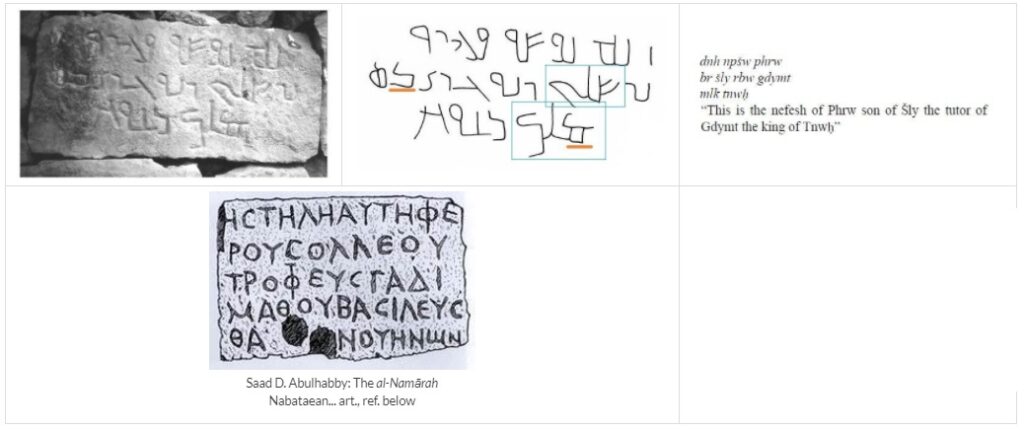
The following text is dated to April 428 AD and was found in Sakaka region (Arabia). The script tends to become generally cursive. Most of the letters. Most of the letters are evolved: d, final h, w, Ή, y, k, m, r, š, t….
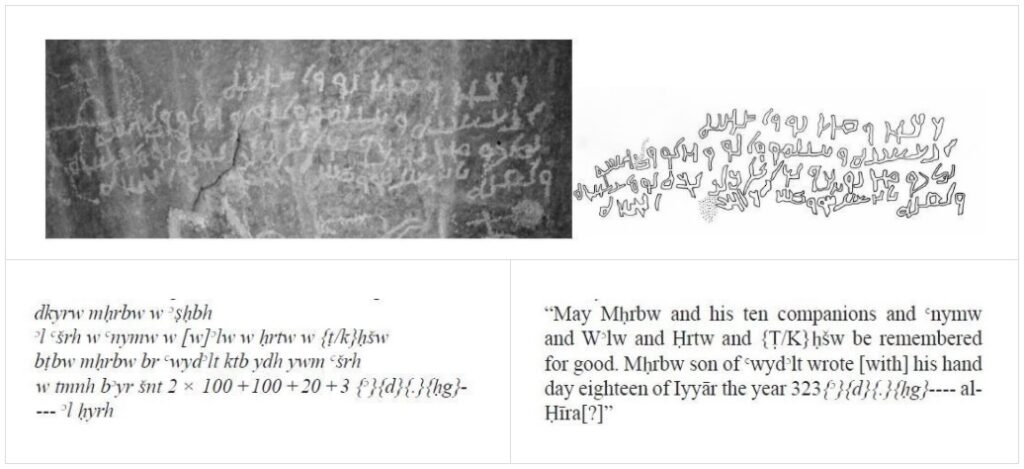
The al-Namārah (or Nemara) inscription is often considered as the oldest known classic Arabic document, while written in the Nabataean cursive script. It dates back to 328 AD and was discovered in South Syria. The interpretation and translation are still subject to discussions, but it is generally understood as the epitaph (or honoring monument, as the beginning of the text is uncertain) of Imru’ al-Qays ibn ‘Amr, an Arab tribal leader who collaborated with (or was related to) the Byzantines authorities and fought against Arab tribes of the southern Arabian Peninsula.
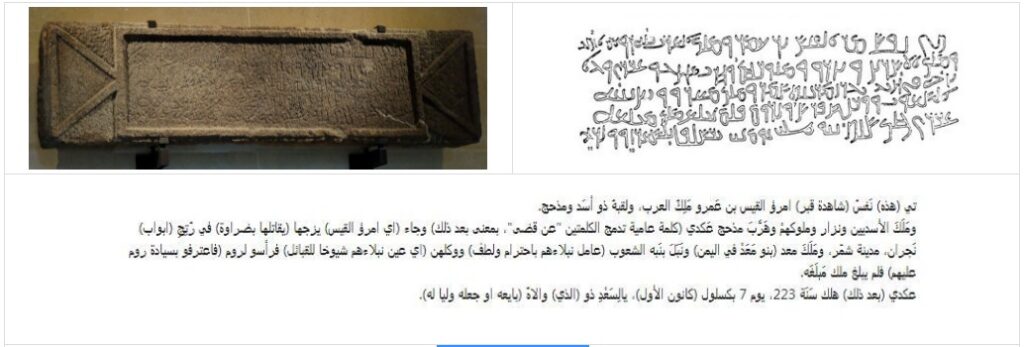
Translation (A. Bellamy): This is the funerary monument of Imru’ al-Qays, son of ‘Amr, king of the Arabs, and (?) his title of honour was Master of Asad and Nizar.And he subdued the Asadis and they were overwhelmed together with their kings, and he put to flight Madhhij thereafter, and camedriving them to the gates of Najran, the city of Shammar, and he subdued Ma’add, and the dealt gently with the noblesof the tribes, and appointed them viceroys, and they became phylarchs for the Romans. And no king has equalled his achievements.Thereafter he died in the year 223 on the 7th day of Kaslul. Oh the good fortune of those who were his friends!
References:
Ahmad Al-Jallad: The Earliest Stage of Arabic and its Linguistic Classification, https://www.academia.edu/18470301/Al-Jallad._2018._The_earliest_stages_of_Arabic_and_its_linguistic_classification?email_work_card=view-paper
George Boeree: Evolution of Alphabets, http://webspace.ship.edu/cgboer/evolalpha.html
Laila Nehme: A glimpse of the development of the Nabataean script into Arabic based on old and new epigraphic material https://www.researchgate.net/publication/261942707_A_glimpse_of_the_development_of_the_Nabataean_script_into_Arabic_based_on_old_and_new_epigraphic_material
Michael Everson: Proposal for encoding the Nabataean script in the SMP of the UCS , http://www.unicode.org/L2/L2010/10473-n3969-nabataean.pdf
Michael Macdonald: Language, Scripts, and Uses of Writting among the Nabataeans http://krc.orient.ox.ac.uk/resources/ociana/publications/nabataeans.pdf
Michael Macdonald: The Development of Arabic as a Written Language http://krc.orient.ox.ac.uk/resources/ociana/publications/ancient_arabia_written_word.pdf
Michael Macdonald: Clues to How a Nabataean May have Spoken, from a Hismaic Inscription https://www.academia.edu/37399737/Clues_to_How_a_Nabataean_May_have_Spoken_from_a_Hismaic_Inscription?email_work_card=view-paper
Michael Macdonald: Reflections on the Linguistic Map of Pre-Islamic Arabia http://krc2.orient.ox.ac.uk/aalc/images/documents/mcam/mcam_linguistic_map.pdf
https://www.wikiwand.com/en/Nabataean_Aramaic
Saad D. Abulhabby: The al-Namārah Nabataean Arabic Inscription (328 CE) https://www.academia.edu/1958640/Reading_al-Nammara_and_Umm_al-Jimal_Nabataean_inscriptions
Saad D. Abulhabby: Roots of Modern Arabic Script: From Musnad to Jazm,http://arabetics.com/public/html/more/History%20of%20the%20Arabic%20Script_article.htm
http://mnamon.sns.it/index.php?page=Esempi&id=2&lang=en#240
Lecture:
Michael Macdonald: https://www.youtube.com/watch?v=O2-pVJN9G7s














